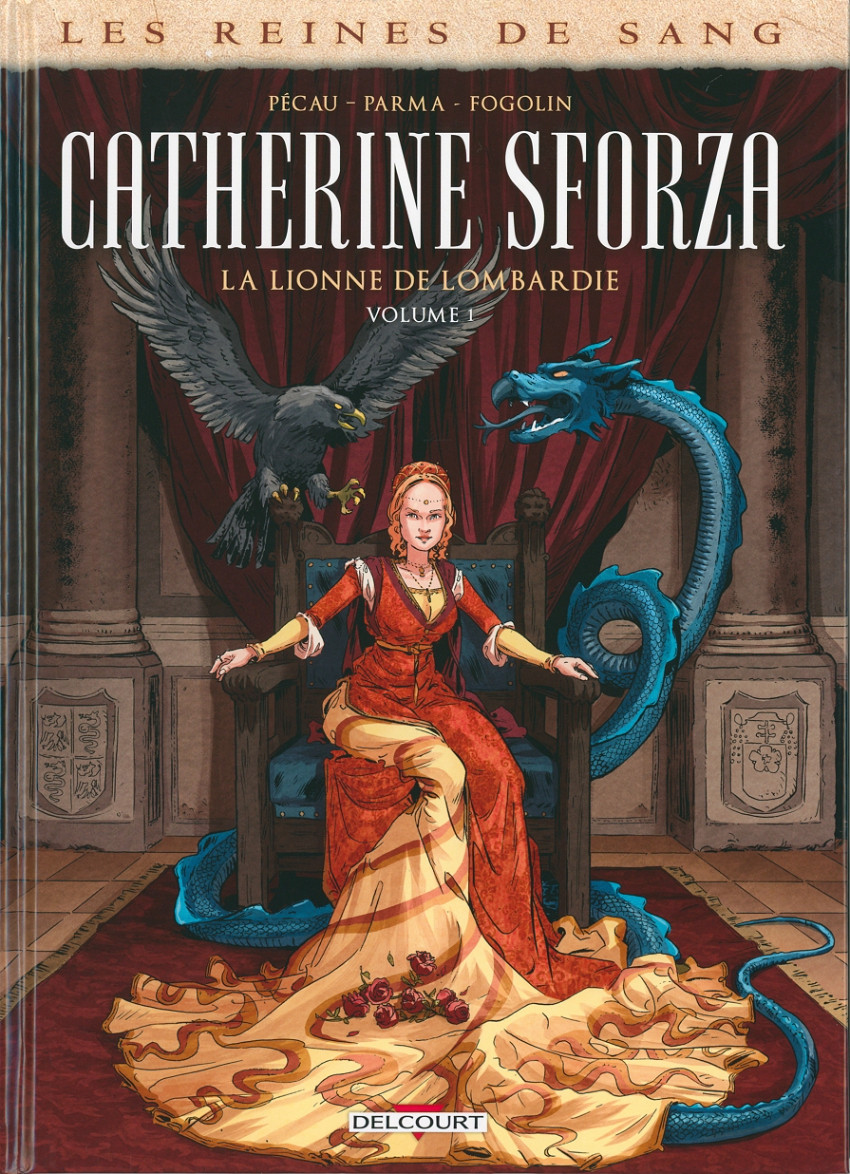–
A
n the 15th century, Venice, Florence, Genoa, Milan and Rome under the papal leadership alternated alliances to influence the destinies of the Italian peninsula. This Game of Five, Catherine, bastard of the Duke of Milan, learned the rules from her uncle and mentor, Ludovico Sforza. The assassination of her father, during the winter of 1476, precipitates her abruptly on the chessboard where her marriage with the nephew of the Pope leads her to a strategic point of the most delicate. From now on lord of Forli and Imola, at the limits of the territory of the Florentine rival, she had to deal with the divergent interests of the antagonists. But will her determination and political sense be enough to save her from the plots that are being hatched behind the scenes?
Poetically called “the lady with jasmine”, Catherine Sforza (1463-1509) becomes the “lioness of Lombardy” from the pen of Jean-Pierre Pécau. Already author of two portraits of strong women who have found their place in the collection Queens of blood (as it happens Constance of Antioch and Bicycle), the latter endeavors to retrace the main stages of the one who prided himself on standing up to the Borgias by fiercely defending his small principality.
After a long, well-contextualized introduction, the screenwriter sets out to follow in his heroine’s footsteps and paint a picture of the thorny political situation in Quattrocento Italy. Between attempted murder, clashes, betrayals and negotiations between opposing powers, there is no shortage of action, quite the contrary, and the main protagonist seems to be swimming at ease. From Milan to Imola, via Rome, the beautiful princess imposes herself by her will and her speed to take matters in hand. It is also interesting to note how her husband appears pusillanimous, the better to underline Catherine’s skill and expand her choices. In this regard, the episode of the resistance of the Château Saint-Ange is eloquent. However, if the subject is mastered, the articulation of the different narrative phases fails by lack of sufficiently explicit temporal references in the text.
The drawing by Gabriele Parma, enhanced by the colors of Dimitri Fogolin, is generally pleasant, especially with regard to the landscapes and the panoramic views very successful. On the other hand, the close-ups of the faces turn out to be a little less convincing despite their expressiveness. The controlled cutting and framing ensure a good dynamic and some boards are worth lingering.
Despite a few caveats, this first volume of Catherine Sforza, the lioness of Lombardy manages to hold the attention and gives a pretty good idea of what was like the existence of one of the most prominent female figures of Italy during the Renaissance.
Par M. Natali
– .


